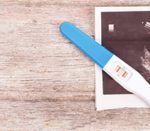“These classifications came about because of a disconnect between how patients felt physically and how we had been trained to measure lupus activity,” she says. “What we found is that patients talk about having a lot of fatigue and achiness and feeling poorly, but we couldn’t identify inflammation as the cause.
“It was this real conundrum that made us take a step back and decide to start measuring patient-reported outcomes and their reported disease activity,” she says. “This led us to devise a conceptual model with two domains of disease activity in lupus.1 Patients tend to describe type 2 as the worst part of lupus, so we started measuring both. We’ve seen some really interesting patterns,” she says.
“Some patients don’t appear to have a correlation between type 1 and 2 symptoms. A small group of patients can have very active lupus—particularly in their kidneys or with low blood counts—but don’t have the fatigue and achiness of type 2.” Dr. Clowse says these patients don’t feel their lupus.
More patients have persistent type 2 symptoms despite resolution of type 1 activity. “We are developing strategies to understand the origin of their ongoing symptoms,” she says.
“On the other hand, many patients report a correlation between their type 1 and 2 symptoms. In these patients, when their type 1 activity increases, they also experience fatigue and achiness; when the type 1 subsides, they feel significantly better. We suspect the type 2 symptoms in these patients may be driven by inflammation and respond to more aggressive immunosuppression,” she says.
 Linda Childers is a health writer located in the San Francisco Bay Area.
Linda Childers is a health writer located in the San Francisco Bay Area.
Reference
- Eudy AM, Rogers JL, Corneli A, et al. Intermittent and persistent type 2 lupus: Patient perspectives on two distinct patterns of type 2 SLE symptoms. Lupus Sci Med. 2022 Aug;9(1):e000705.


